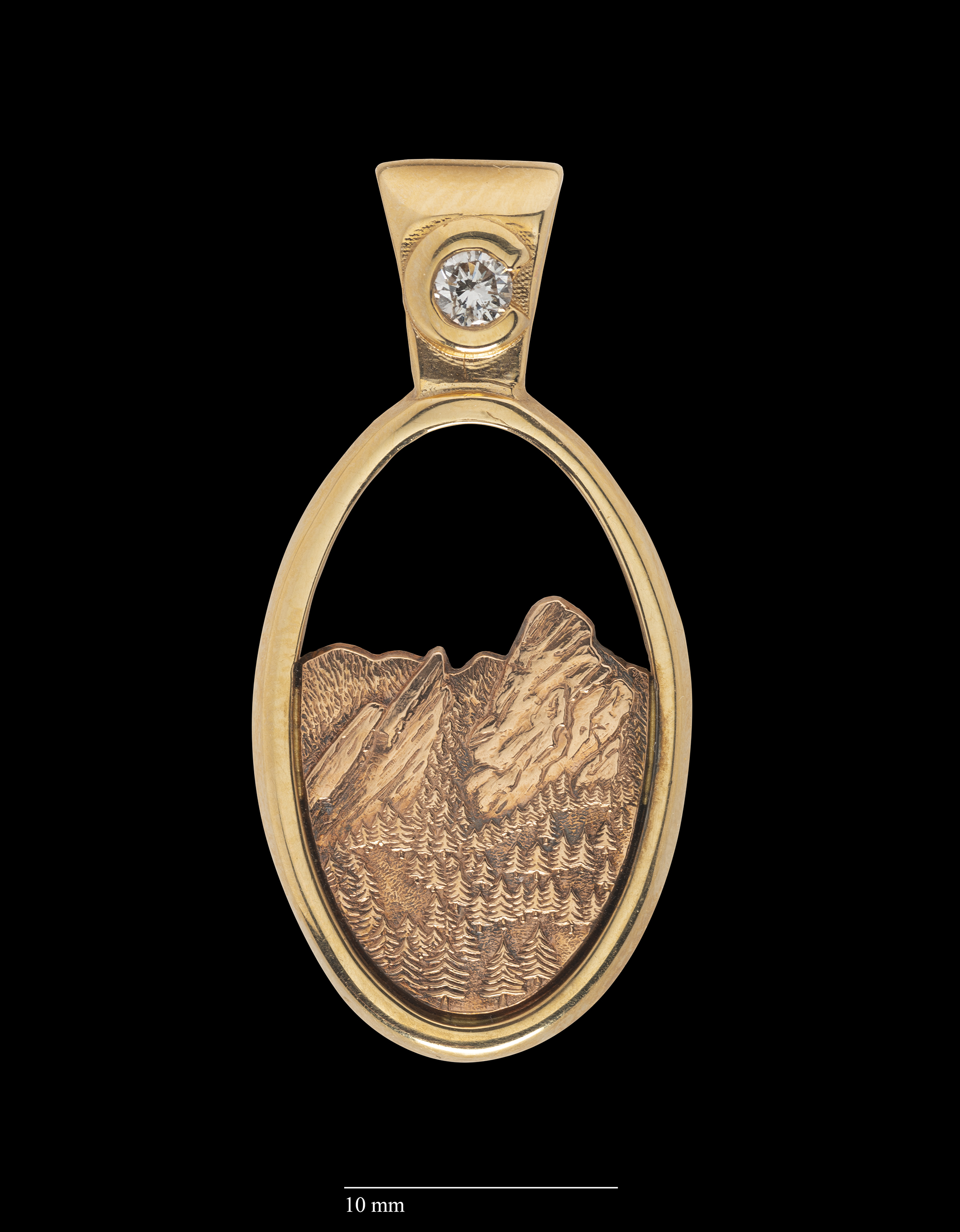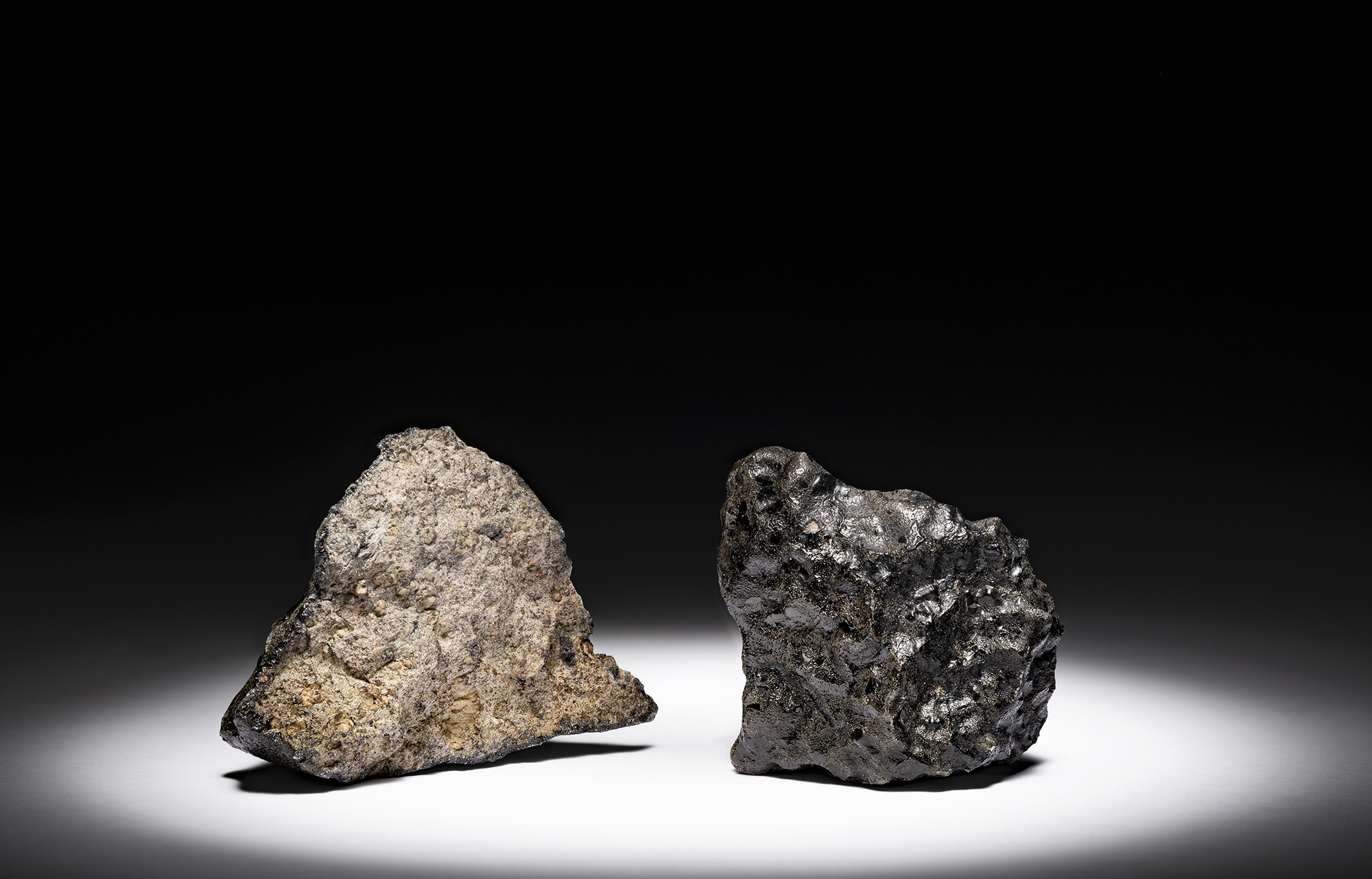As the pandemic loomed,
the Museum found a silver lining—acquiring a suite of new Colorado-relevant specimens.
The most iconic item in this group of new acquisitions is an example of our state gemstone—aquamarine. Although a mainstay of jewelry, most designs don’t bear Colorado aquamarines. That’s because most local crystals aren’t big enough to allow faceting into large gems. Thus, most jewelers use stones from Brazil or Madagascar, and much of those are heat-treated to make them blue.
In 2019 Buena Vista miner Tommy Cardwell found a huge, gem-grade aquamarine—but it was cracked down the middle and not suitable as a mineral specimen. Fortunately, Denver gem-cutter Carl Holzer was able to facet this crystal into a 9.12 carat emerald cut beauty! It is one of the largest Colorado aquamarines ever to be faceted. Local jeweler Morgan Sonsthagen notified us of the specimen and it now belongs to the people of Colorado, as part of the Museum collections.

Two additional acquisitions are pieces of jewelry highlighting some of our state’s most ancient geology—diamonds and gold. Produced in the heyday of diamond mining in the 1990s, they each present a diamond from the now-abandoned mines near Red Feather Lakes, Colorado. Such commemorative pieces are made of Colorado gold and depict the Flatirons, the state’s “C”, or other local landmarks. Several different styles of this collectible jewelry were made when the diamond mines were active, but most were not saved. If you know of another one of these jewelry pieces, please drop a line to [email protected].

Perhaps the most peripatetic pandemic-acquired specimen is from outer space – a meteorite found in Colorado that boomeranged back to us via a collection in Switzerland. In 1937, Museum Curator of Meteorites Harvey Nininger collected two pieces of a chondritic (stony) meteorite from the eastern plains of Colorado, near what is now the ghost town of Shaw.
In 1946 Nininger left Colorado to found the American Meteorite Museum near Meteor Crater in Arizona, taking much of his collection with him. His son in law, Glenn Huss, who helped him collect many meteorites and ran the American Meteorite Laboratory in Denver, ended up with the Shaw meteorites. He cut them into slices and sold them to private collectors and museums worldwide. Colorado meteorite maven Anne Black let us know of a soon-to-be available specimen from a private collection in Zurich, and we brought this deep-time piece of Colorado history back to the Museum.
The last two new specimens hail from none other than…Mars.
They’re meteorites that are unlike any others from the Red Planet because they came from an unusual lava flow that originated very deep in the planet, blanketing the surface. Such flows become a dark-colored rock called basalt, examples of which make up the dark patches on our Moon or the rocks that cap Table Mountain in Golden.
About 700,000 years ago, this Martian basalt was hit by a meteor that ejected pieces of it from Mars’ surface into outer space. A small piece of this cosmic debris was pulled to the Earth’s surface on July 18, 2011, developing a burnt exterior (known as fusion crust) as it plunged through our atmosphere at 90,000 miles per hour. Moroccan nomads collected most of the pieces, selling them to museums and collectors shortly thereafter. A decade later, it only seemed appropriate to have a piece of the Red Planet in the Museum’s new “Space Odyssey,” so geologist and meteorite expert Matt Morgan helped us locate two pieces for the exhibition.

What makes acquisitions like this possible, and especially during a budget-crunching pandemic?
Endowments.
Such funds are usually started by a seed donation or an estate gift that is then invested by the Denver Museum of Nature & Science Foundation board. In this case, the A. E. Reynolds Endowment Fund was established in 1989 by former Museum Trustee Ren Morse to honor his grandfather, Albert Eugene Morse.
Morse was a Colorado mining magnate who helped found the Museum and was one of its original trustees. With this fund and others like it, some of the interest generated is added back to the principal in order to grow the endowment’s principal, while another portion of the interest is made available to use. Such funds build up over time and can be added to at any time by interested donors. Over the years, the A. E. Reynolds Fund has allowed the Museum to acquire geologic specimens when opportunities arise that are beyond the scope of normal operations—like during a global pandemic. We are fortunate to have such visionary support.
Specimens like these are one of a kind, but often have multiple benefits—whether they enable research about other planets or they simply inspire while documenting elements of Colorado’s mining industries. As custodians of earth and human history, our job as curators and collection managers is to ensure that examples of these shared histories are held in trust for the community and for the next generation, while also trying to keep an eye out for new opportunities to acquire and showcase such items and their stories.
James and Nicole help steward the rock, mineral, meteorite and invertebrate paleontology collections for the Museum.
See Them for Yourself
Some of these specimens are displayed in a just-opened Recent Acquisitions case in “Coors Gems & Minerals Hall” and the newly renovated “Space Odyssey.”